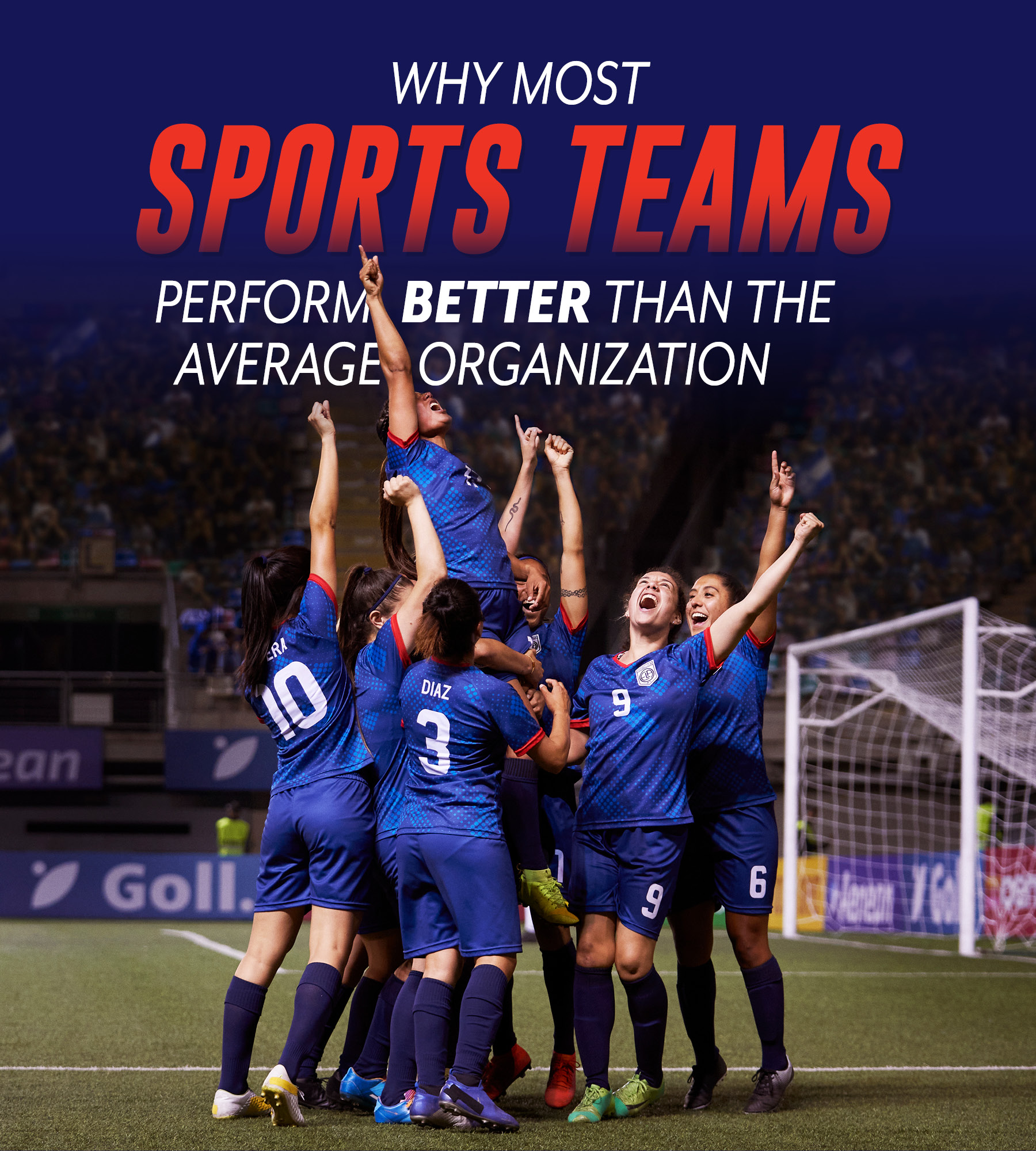Language
You can read the magazine in one of the following languages
Have you ever caught yourself watching your sport of choice and thought, “I wish my work team would gel together as well as my sports team does?”
Have you wondered what the special ingredients are that make sports teams so much better at teamwork than the average organization? How can you capture them for your own company? Well, there are many lessons you can take – many of which have been written about before. But a key one that isn’t often called out is the strategy-people disconnect.
As Peter Bregman of Harvard Business Review recognized, devising a smart strategy is hard, but it is 10 times harder to get your people to execute on that strategy. Sports teams have a simple advantage from the get-go: their people all want the same thing. They want to win.
Imagine if all your team members came to work every single day wanting the same thing you did; if the strategy of your organization aligned to the needs, capabilities and motivations of the people within the organization.

Imagine if all your team members came to work every single day wanting the same thing you did.
It helps significantly when everyone’s end goal is the same. Even within sports, where it is reasonable to assume everyone wants to win, there are different needs, capabilities and motivations.
As Bregman states, strategic execution is not a strategy challenge, it’s a human behavior challenge. If you have been struggling with executing some aspect of your strategy, it may be time to consider how you bridge the strategy-people disconnect.
Guiding your team to be in alignment with your strategy starts by understanding their unique paths to meaningful work. There are four factors to meaningful work: individual, job, organizational and societal, and many subsets within these factors, as uncovered in the research by Beaumont People.
If you deepen your understanding of the ways in which you provide meaningful work, aligning those to your strategy, you are more likely to attract and retain team members who will be engaged with achieving your organization’s strategic goals.

When individuals are in meaningful work not only is it better for them – they have better job satisfaction, better career advancement and less stress – it is also better for your organization.
Companies where staff have high levels of meaningful work enjoy higher levels of commitment, lower rates of absenteeism and reduced staff turnover. They also perform better in the face of economic downturns or during periods of organizational resizing than companies where staff aren’t as engaged in meaningful work.
The next step in building the bridge in your strategy-people disconnect is to review your strategy and to select one key goal that would make the most significant impact in executing that strategy.
By understanding your people’s unique paths to meaningful work, you can recognize the people in your team most likely to help realize your target (your star players, if you will) and align them to that one key goal.

Put all your focus into this, and you will be on a much stronger path to execution. Others will follow. This is what will have the biggest impact on that human behavior challenge.
As a north-London born, lifelong Tottenham Hotspurs fan, I want to use Ange Postecoglou as an example here. For context, for the non-soccer fans, Postecoglou wasn’t the first choice for the English Premier League club – he had no previous premier league experience. But he now holds the record for the best start to a premier league season. Spurs is playing an exciting, attacking brand of soccer.

Consider the ways in which you provide meaningful work and how that genuinely aligns to your strategy.
The key thing that Postecoglou made clear from the start was that he had a plan that he would stick to – no matter what. He warned the club that it might not always be smooth sailing but that he wouldn’t waiver. After a great start, Tottenham was beset by injuries; and its flying start slowed.
A team without alignment to one key goal may have changed tactics, but Postecoglou has stayed the course, with the full support of the players and the club. As a result, Spurs are very much still in the mix with other clubs vying for the title.
If you are struggling with executing an element of your strategy, you may have a strategy-people disconnect. Reflect on the fact that your people’s needs, capabilities and motivations will all be unique and may be different to that of your organization.
Consider the ways in which you provide meaningful work and how that genuinely aligns to your strategy. In which ways, and how often are you communicating this? Then pick the one big thing you can do to execute your strategy and focus your star players on this to make it happen.

Nina Mapson Bone
Contributor Collective Member
Author of ‘Meaningful Work: Unlock Your Unique Path to Career Fulfilment’, Nina Mapson Bone is a people strategist. She consults with boards, CEOs, founders and executives on bridging the disconnect between strategy and the needs, motivations and capabilities of their people. Nina has experienced firsthand the power of work to transform people’s lives and seen time and again how, when engaged in meaningful work, every outcome at work improves for both the individual and the organization. For more information, go to https://www.ninamapsonbone.com.au/
